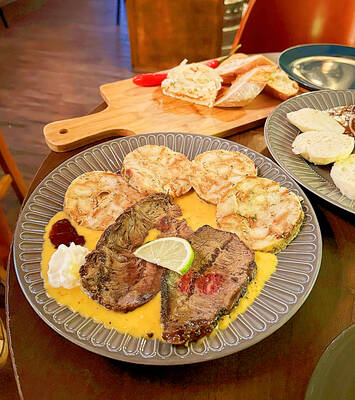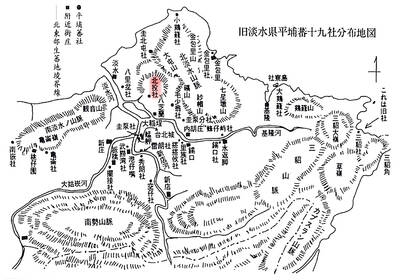Work is under way to rebuild a so-called temple of the sun in Germany that was erected by Europe's first known civilization 6,800 years ago, long before the great cultures of Mesopotamia or the pyramids of Egypt.
Known as the Goseck Circle, it is one of 150 monumental sites arrayed through Germany, the Czech Republic, Austria and Slovenia.
Each comprising four concentric rings of earth and wood, their gates are thought to point to sunrise and sunset at the winter solstice.
The realization that a very early European farming people designed and built such vast sites has arrived in little more than a decade. Textbooks that assume late Stone Age Europe was far more primitive than the Middle East must be rewritten.
But despite the growing interest, archaeologists know nothing of the appearance or language of the people and can only surmise about their religious beliefs. The culture is known only as that of stroke- ornamented ceramic ware, from fragments of pottery it left.
The jars and bowls had their decoration jabbed into the soft clay with a kind of fork to form zig-zag lines.
The discovery of the 75m-wide circular enclosure at Goseck, 40km southwest of the German city of Leipzig, was announced in 1993, a couple of years after archaeologists in aircraft first noticed the pattern in wheat growing on the flood-plain site.
After excavations, work began this month to rebuild the site for growing numbers of tourists.
In a make-work project, 10 local unemployed people are cutting 3,000 oak posts in a nearby forest to make new palisades.
"The bark has to be stripped off by hand, the same as 7,000 years ago," said Ruediger Erben, the chief executive of Weissenfels County.
"It mustn't look as if it was done by machine or came from a shop."
The walls and ditches are intended to be completed by Dec. 21 for a winter solstice festival: the sun is to rise that day over the southeast and set over the southwest gate, as seen from the "sacred place" at the center.
In a dry run, hundreds of people showed up last December to eat sausages, drink and cheer the sunset there.
Erben said reconstruction would cost just 100,000 euros (US$120,000), while a parking area, plus an information center set to open next year in a castle a kilometer away, will cost 787,000 euros.
Bus tours of Stone Age and Bronze Age sites are already coming through Goseck, which is only 25km from Nebra, where a bronze-and-gold map of the heavens dating from 3,600 years ago was discovered in 1999.
The Nebra celestial disc was in use for hundreds of years, and its latter-day Bronze Age owners were closer to us in time than they were to the people who built the quadruple enclosures. But both discoveries are leading to a reassessment of Central Europe's past.
Long before the first towns developed in the 4th millenium BC in Mesopotamia or the first pyramid was built after 2700 BC, some kind of political leadership had formed, had a vision of monuments and could count on collective labor to build them.
Scientists remain puzzled at the short life of the enclosures, which only remain as discolored earth from where the postholes and ditches were. Analysis shows they collapsed and were replaced by farmsteads within about 200 years and monuments stopped being built.
The whole period of stroke-ornamented pottery is limited to 4900 BC to 4650 BC.
While Goseck has been dubbed a "temple of the sun" in the media, there is no proof of sun worship. Archaeology professor Francois Bertemes of Halle University who led the excavation of Goseck is convinced, though, that it is the world's oldest solar observatory.
Even that remains controversial.
Christoph Heiermann, spokesman for the Saxony state archaeological service, said the purpose of the quadruple enclosures, which inspired his agency's new four-ring publicity logo, is still unknown.
"We prefer to just speak of central places where people gathered. We don't know what they did there. Maybe they were temples. Or markets," he said. The scientific community had not yet accepted that Goseck was an observatory.
Another such enclosure, 126m across, has been excavated under time pressure in Nickern, a suburb of Dresden. It will be lost when a new autobahn leading to Prague is built.
"It was a civilization, and highly organized," said Heiermann. "They cultivated crops and had village communities. They skilfully used stone tools. You can't assume any more that the further back you go, the more savage the people.
"These people were just like us. Where they came from and where they went is a mystery."

Seven hundred job applications. One interview. Marco Mascaro arrived in Taiwan last year with a PhD in engineering physics and years of experience at a European research center. He thought his Gold Card would guarantee him a foothold in Taiwan’s job market. “It’s marketed as if Taiwan really needs you,” the 33-year-old Italian says. “The reality is that companies here don’t really need us.” The Employment Gold Card was designed to fix Taiwan’s labor shortage by offering foreign professionals a combined resident visa and open work permit valid for three years. But for many, like Mascaro, the welcome mat ends at the door. A

The Western media once again enthusiastically forwarded Beijing’s talking points on Japanese Prime Minister Sanae Takaichi’s comment two weeks ago that an attack by the People’s Republic of China (PRC) on Taiwan was an existential threat to Japan and would trigger Japanese military intervention in defense of Taiwan. The predictable reach for clickbait meant that a string of teachable moments was lost, “like tears in the rain.” Again. The Economist led the way, assigning the blame to the victim. “Takaichi Sanae was bound to rile China sooner rather than later,” the magazine asserted. It then explained: “Japan’s new prime minister is

Divadlo feels like your warm neighborhood slice of home — even if you’ve only ever spent a few days in Prague, like myself. A projector is screening retro animations by Czech director Karel Zeman, the shelves are lined with books and vinyl, and the owner will sit with you to share stories over a glass of pear brandy. The food is also fantastic, not just a new cultural experience but filled with nostalgia, recipes from home and laden with soul-warming carbs, perfect as the weather turns chilly. A Prague native, Kaio Picha has been in Taipei for 13 years and

NOV. 24 to NOV. 30 It wasn’t famine, disaster or war that drove the people of Soansai to flee their homeland, but a blanket-stealing demon. At least that’s how Poan Yu-pie (潘有秘), a resident of the Indigenous settlement of Kipatauw in what is today Taipei’s Beitou District (北投), told it to Japanese anthropologist Kanori Ino in 1897. Unable to sleep out of fear, the villagers built a raft large enough to fit everyone and set sail. They drifted for days before arriving at what is now Shenao Port (深奧) on Taiwan’s north coast,